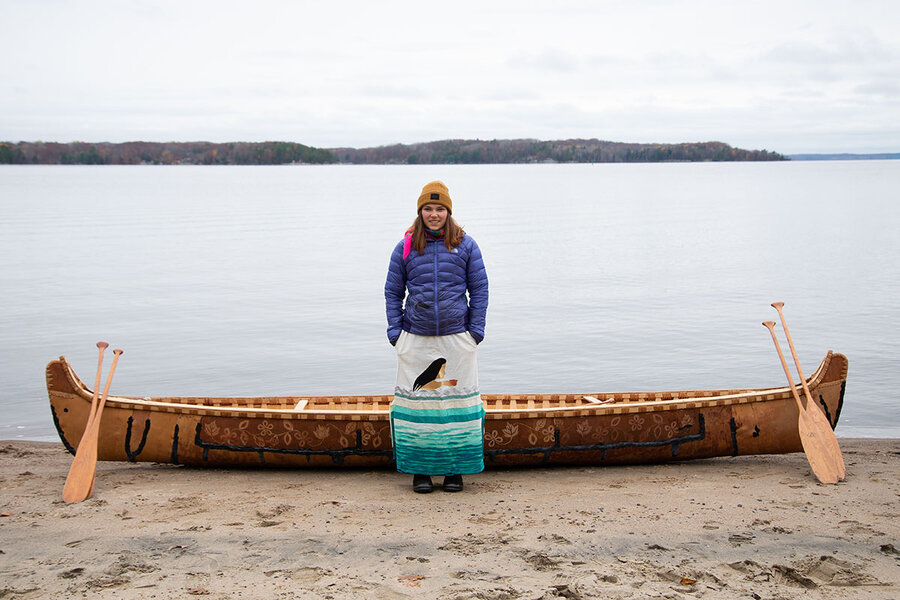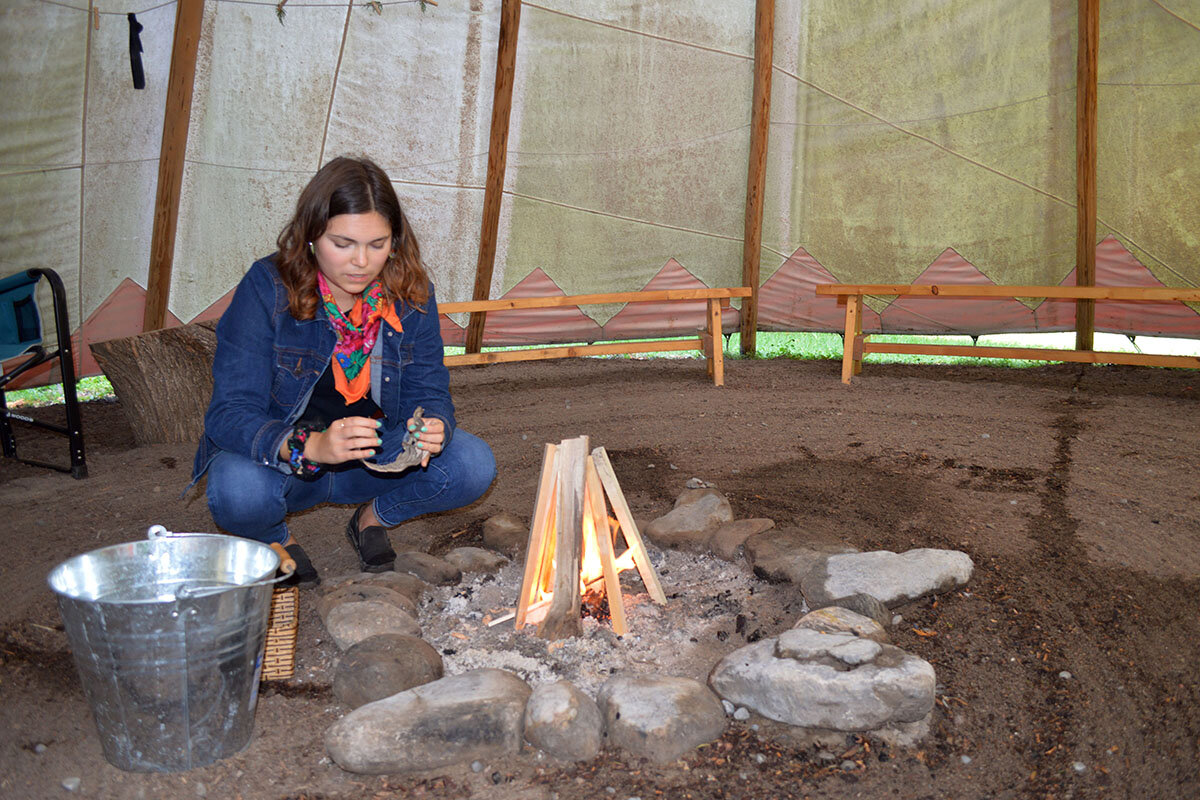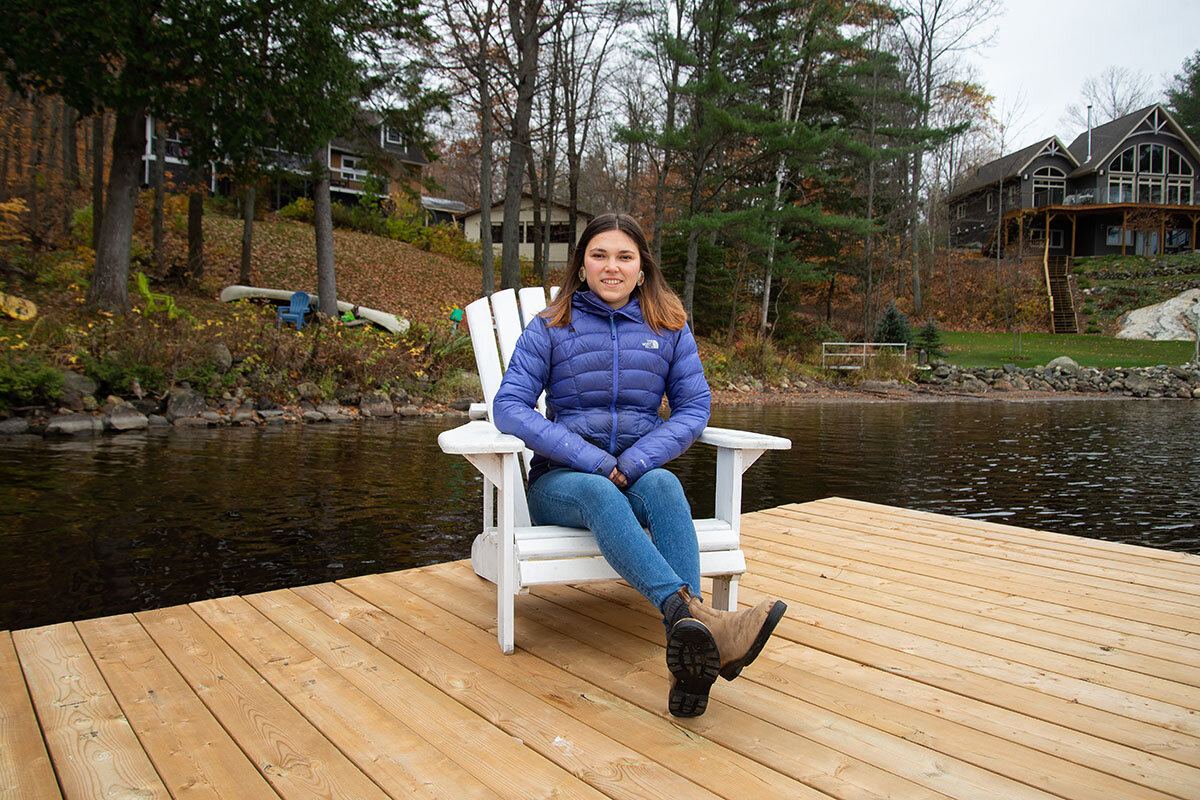No funeral possible: Gracie Crafts on pandemic mental health
Loading...
| Peterborough, Ontario
That day in June was our first real freedom after months of lockdown. COVID-19 cases were going down. Everything was just starting to open up, and everyone was just trying to be outside together. I was swimming with friends in Georgian Bay – big water that has always been central to my life and my Indigenous roots. I’ve found being on the water soothing, calming.
That day things almost felt normal.
But as I came back from our swim, my phone was ringing. It was one of my best friends calling to tell me our friend Peter had killed himself. Standing there, soaking wet, I was in total disbelief.
Why We Wrote This
This Canadian college student’s questioning after the suicide of a friend is a glimpse of the mental health issues the pandemic triggers. She is one of twelve 21-year-olds the Monitor’s interactive 21 in ’21 global report followed to understand the pandemic’s effect on a generation about to be adults.
Peter and I had lockers beside each other in high school. We joked around a lot; we sat next to each other at grad, and I remember he teased me about the awards I won and how people were getting sick of seeing me onstage. We had gotten closer after high school. We sent each other photos of the outdoors, of our programs and travels.
He was studying fish and wildlife, and was more into hunting and fishing. As an Indigenous environmental science major, I have always been into camping, paddling on the water, the environmental side. It was on my 21st birthday in April, during the pandemic, that he told me he was transferring to my university, Trent, in Peterborough. He had a lot of questions about what classes to take, and I was helping him. We had plans to hang out, and we were both really excited to be in the same place again. It’s hard to think that we would have been together right now. I know he would have really liked my friends.
I’ve experienced the death of others, and even suicides, but not of someone my age. He had just turned 21, too. There are all these things that we’ll never know. No one knows anything about why he did it. Things were starting to feel better with the pandemic, but were still so challenging. I think that when it happened, it must’ve been a very low, low time.
I know for me, there are all these things I want to do with my life, and in my mind, there was a reason for him to continue. So I struggle with why he couldn’t see that. I’ve started to see a counselor, to help with grieving and processing a suicide.
The pandemic, I think, makes me more hypersensitive to other people’s mental health, just because there are so many lows right now. I’m going through this whole new wave over Peter – of trying to figure out, if this were to happen again, how I’d know that I had done the best that I could to help someone.
When it happened this summer, we were all grieving. But there wasn’t ever a real funeral, because there couldn’t have been one. What would that even look like in a pandemic? We had to think about things like, “How are we going to safely be around each other? How are we not going to hug each other? How are we going to support each other?” Even carpooling to go visit people was discouraged at the time.
So we were all trying to figure out how to support each other. And it was a lot more of just, “Well, let’s go for a swim. Let’s go for a walk.” It was way more outdoor time, which has always helped me process things. And that’s what I shared with Peter.
We grew up on this water and shared a passion to keep these waterways healthy. One of our connections was in conservation work at the Georgian Bay Biosphere, which includes thousands of wind-swept granite islands in Lake Huron. He did a co-op there in high school, and I was working there over the summer with the Georgian Bay Anishinaabek Youth as the Indigenous education intern.
An idea for coming together in Peter’s memory came out of that. Part of my fieldwork last summer was a turtle release project. Since people I worked with also knew Peter from some of his work there, we decided to invite his parents to the release at the end of the summer.
As an Anishinaabe woman from Wasauksing First Nation, I had helped incorporate some Indigenous knowledge into the release. We offer semaa, which acknowledges the journey of the new being in life and is also part of the biosphere’s work in “two-eyed seeing,” which means combining Indigenous and Western science in conservation work.
And though it was a gray day, it was a really, really good day. Peter’s parents aren’t outdoorsy and they aren’t Indigenous, but we trekked with them in long pants and rubber boots through the reeds holding three large containers of these tiny green hatchlings that were incubated over the summer.
We released the turtles at the edge of the wetlands into the murky water. We said, “Baamapii mishiikenh,” which in Anishinaabemowin means, “See you later, snapping turtle.”
It spoke to Indigenous teachings I know around suicide that I shared that day with his parents: that he’ll always be around, that it’s going to be different. But it’s not the end.
It was the first time I was able to really talk to them about my relationship with their son. And, of course, now I’m Facebook friends with his mom, and she comments on all of my stuff.
She’s told me, “We’re living through this pandemic right now, and we are all going through these new experiences. Please make sure that this isn’t holding you back. Continue to do your studies, continue to set these goals, continue to do all these things, because that’s exactly what he would have wanted.”
Read more here about Gracie in a narrative of 21-year-olds around the globe in the last three months of 2020. And read other personal essays like Gracie’s here: 21 in ’21.







